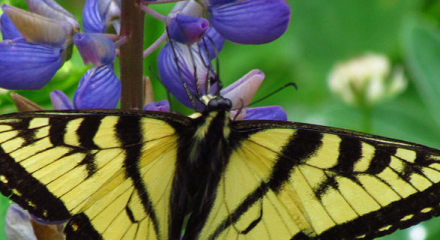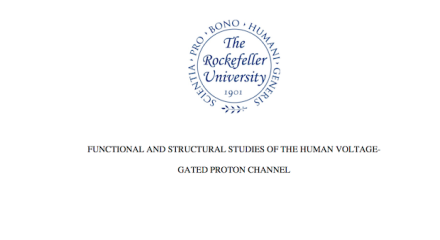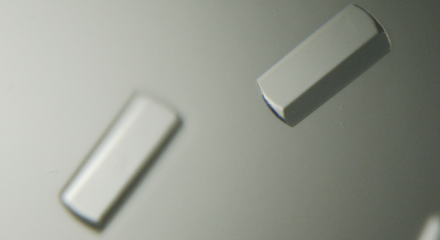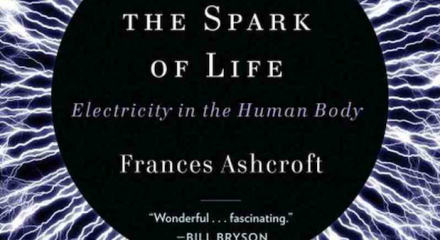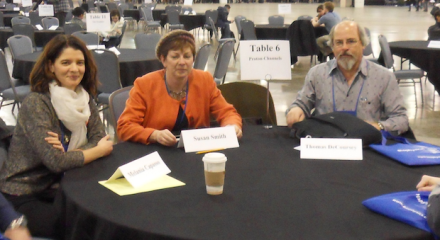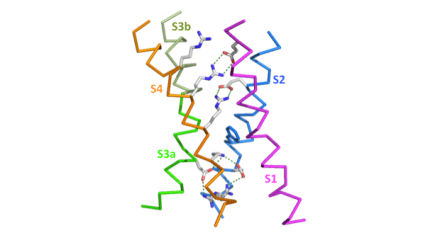How the butterfly became resistant to deadly cyanide
Image: Tiger swallowtail butterfly on wild lupin. Image uploaded to wiki media by Dr Gordon E. Robertson. Last summer I entered into the Wellcome Trust Science Writing Prize (#SWP2014) and was lucky enough to be shortlisted. Previously I posted my entry here on my blog and you can still find a copy of the draft I … Continue reading
My Thesis
My PhD thesis entitled “Functional and Structural Studies of the Human Voltage-Gated Proton Channel” has recently been published online by the Rockefeller University website here. The Thesis covers six years of extensive research that I carried out in the Laboratory of Molecular Neurobiology and Biophysics at the Rockefeller University under the tutelage of Dr Roderick MacKinnon. … Continue reading
International Year of Crystallography
2014 is the international year of crystallography. I thought I would celebrate this occasion, which is very close to my heart, with a fun blog post sharing exciting and interesting videos and articles related to crystallography. As I come across more interesting content I will update this post so keep coming back. If you want … Continue reading
The Spark of Life – Book Review
I had the great pleasure in late October to attend the awarding of the Lewis Thomas Prize for Writing about Science to Dr Frances Ashcroft for her book The Spark of Life. The ceremony included a lecture by the author followed by a dinner at the Rockefeller University President’s house and further discussion with the … Continue reading
Proton Channels at the Biophysical Society Meeting – 2013
This year was a big year for Hv at the Biophysical Society meeting in Philidephia (Feb. 2-6th). With a symposium and a platform session dedicated to Hv related talks, the meeting boasted a large contingent of scientists studying this channel. I was in attendance and really enjoyed meeting all my fellow Hv researchers whose work I have … Continue reading
The importance of charge compensation in the membrane
In this post I continue my series on the omega current by discussing how a mutation that removes a charged group from the voltage-sensor domain (VSD) would be highly destabilizing and disruptive. The omega current is a leak current that passes through the VSD of mutated voltage-gated cation channels. In some cases, the mutated channels … Continue reading
Journal Club: Tracking a complete voltage-sensor cycle with metal-ion bridges
In this post I would like to start an online discussion about a very interesting recent PNAS paper: Tracking a complete voltage-sensor cycle with metal-ion bridges by Henrion et al. I know that other people in the voltage-gated cation channel field are very interested in this paper and it also relates to many of the … Continue reading
Omega Current Channelopathies
In this post I will be continuing my series on the omega current. The omega current is a leak current that passes through the voltage-sensor domain (VSD) of mutated voltage-gated cation channels. Mutation of the VSD S4 helix can reveal a cryptic pore that allows ions (H+, Li+, K+, Rb+ and even guanidinium) to cross … Continue reading
The Omega Current
Mutation of voltage-sensor domains (VSDs) can sometimes lead to ions leaking across the membrane through the VSDs themselves. Ion conduction through the mutated VSD of the Shaker Kv channel was coined the “omega current” by Tombola, Pathak and Isacoff (Tombola et al., 2005). Many different mutations have been identified that result in current leaking through the VSDs of … Continue reading
Pores and Selectivity Filters
In this post I will be briefly introducing the classical ideas of ion conduction through membrane proteins. The idea of ion channels as selective pores in the cell membrane is very old but is now understood at atomic detail. So what is a channel? What does an ion conductive pore look like? Here, I will … Continue reading

